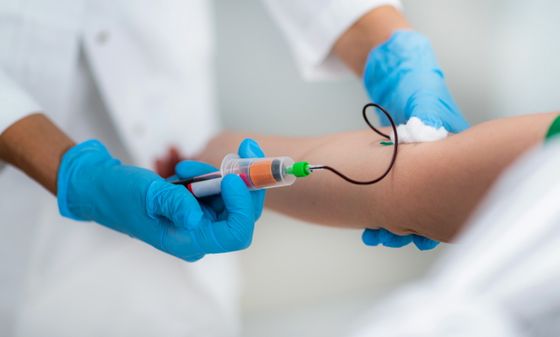Research results that rejuvenation effect may be obtained by “diluting blood” instead of transfusing young people's blood

Human beings have been conducting various quests for 'rejuvenation' and 'immortality' since ancient times, but in recent years, based on the
Aging | Rejuvenation of three germ layers tissues by exchanging old blood plasma with saline-albumin
https://www.aging-us.com/article/103418
Diluting blood plasma rejuvenates tissue, reverses aging in mice | Berkeley News
https://news.berkeley.edu/2020/06/15/diluting-blood-plasma-rejuvenates-tissue-reverses-aging-in-mice/

In 2005, a research team by Professor
However, as a result of excessive attention in the 2005 research, Professor Convoy points out that the mere expectation that 'the blood of young people has rejuvenating substances' has gone a step further. Professor Convoy's research team has continued to experiment after that, and in 2016, ``There is no rejuvenation effect on the blood itself of young mice, it is possible that some substance in the blood of old mice is causing aging. We have published the research results showing that.
It turns out that there is no ``rejuvenation effect'' in young blood, but another possibility of delaying aging is newly found-GIGAZINE

by Phillip Jeffrey
According to the 2016 study results, Professor Convoy showed that the accumulation of certain proteins with aging inhibits the maintenance and repair of tissues, and the rejuvenation effect of combining two mice is that the blood of old mice is It seems that he thought it might be the effect of being diluted. Therefore, Professor Convoy's research team conducted experiments using albumin- containing physiological saline as 'neutral blood' rather than old or young mice.
In a new experiment conducted by the research team, half of the plasma of old mice was replaced with physiological saline containing 5% albumin and the course was observed. In this work, the protein contained in mouse plasma was simply replaced by albumin, but it was confirmed that tissues such as brain, liver and muscle were rejuvenated in old mice.
In addition, the research team conducted similar experiments on young mice, but it seems that the health of young mice was not adversely affected. In addition, the rejuvenation effect of replacing half of the plasma with physiological saline containing albumin was equal to or greater than that of connecting two mice with blood vessels, the research team reports.

After confirming that the dilution of blood significantly improved the health of aged mice, the research team conducted a proteome analysis to analyze proteins in the blood of rejuvenated mice. As a result, plasma exchange reduced the concentration of inflammatory proteins that increased with age in the blood of old mice, and at the same time increased the number of beneficial proteins, and plasma exchange had a rejuvenating effect. It is said that the same effect was confirmed in the blood of humans who had undergone plasmapheresis .
According to this discovery, rejuvenation involves 'some kind of aging substance contained in the blood of old people' rather than 'some kind of rejuvenating substance contained in the blood of young people', and there is a view that rejuvenation is possible by removing it. It became an advantage. 'Young blood or any factor is not necessary for the rejuvenation effect,' said Convoy, 'diluting old blood is sufficient.'
Plasma exchange therapy, which removes pathogenic substances contained in plasma components, has already been approved by the US Food and Drug Administration (FDA) to treat autoimmune diseases such as Goodpasture syndrome , Guillain-Barre syndrome , and systemic lupus erythematosus. Is being used.
``It will take some time for people to give up the idea that'youth plasma contains rejuvenating substances,''' co-author Dobri Kiprov points out, but this study He said he hopes the results will fuel research in plasmapheresis related to autoimmune diseases as well as aging.

Related Posts:






